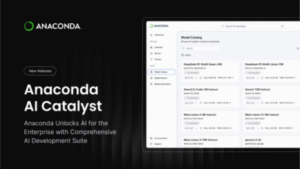People often get confused when banks ask for IBAN, SWIFT, or BIC codes, and they don’t know which number to provide when completing international transactions.
This article provides a practical breakdown of these codes, including what they mean, the differences between them, and when each is required.
What Is an IBAN?
IBAN stands for International Bank Account Number, which is a globally standardized coding system for identifying individual bank accounts when facilitating international transactions.
The IBAN system was especially developed for Eurozone transactions, but its use has since expanded to include some countries in the Middle East, Africa, the Americas, and Asia. Currently, IBAN for international money transfers is applicable to over 80 countries.
IBANs are alphanumeric codes that contain up to 34 characters, depending on the originating country. Currently, most IBANs have 16-33 characters.
Typical format of IBAN:
- Belgium (16 characters): BE71096123456769
- Costa Rica (22 characters): CR23015108410026012345
- United Kingdom (22 characters): GB29NWBK60161331926819
Each IBAN includes a unique identifier that contains a country code, check digits, bank code, and account number, helping financial institutions route transactions faster and accurately.
What Is a SWIFT Code (or BIC)?
SWIFT code stands for Society for Worldwide Interbank Financial Telecommunication code. It is also referred to as BIC (Business Identifier Code).
When a bank requests a SWIFT code, SWIFT ID, BIC, or SWIFT BIC, they are referring to the same thing.
SWIFT is a global telecommunication network consisting of over 11,500 institutions in more than 220 countries and territories, comprising over 40,000 payment routes. Basically, it is used in almost every country, including the US and Central America.
SWIFT code serves as a messaging code that helps financial institutions identify themselves and securely process payment instructions among themselves.
It is an alphanumeric code that typically contains 8-11 characters, indicating:
- Bank code
- Country code
- Location code
- Branch code
GUAYECEG (swift code for Banco Guayaquil S.A., Ecuador) is an example of a SWIFT code.
Just as it is important to check for fees for Ecuador or any other country before a transfer, it is equally important to check and validate the SWIFT code before making a transfer.
IBAN vs SWIFT: Comparison
Below are the differences between IBAN and SWIFT codes.
| FEATURE | IBAN | SWIFT Code |
| Format | Alphanumeric code with up to 34 characters, depending on country of origin. | Alphanumeric code, with 8-11 characters, depending on the bank. |
| Use | For identifying individual bank accounts when routing international wire transfers | For identifying a specific financial institution during an international transaction |
| Content | Each IBAN contains a country code, check digits, bank code, and account number | Each SWIFT code includes a bank code, country code, location code, and optional branch code. |
| Coverage | Widely used in Europe. Also applicable in some countries in the middle east, Africa, Americas and Asia. | Used worldwide in over 200 countries and territories. |
Additionally, SWIFT codes are applicable to a wide range of institutions, including financial and non-financial institutions. IBANs, on the other hand, are largely restricted to banks.
Which One Do You Actually Need?
On the one hand, IBANs are typically used for transfers in the Eurozone and neighboring countries.
On the other hand, you need a SWIFT/BIC code when completing most international transfers worldwide, irrespective of location.
Lastly, you need both IBAN and SWIFT code when making transfers to countries that recognize the IBAN system. In this case, the IBAN helps identify the individual account while the SWIFT code identifies the recipient’s bank.
What Happens If You Use the Wrong One?
If you use the wrong IBAN, the transaction:
- It will be rejected and returned to your account if there is no bank account that corresponds to the wrong IBAN.
- It may go through to the wrong bank account if there is a bank account that corresponds with the IBAN.
Similarly, if you use the wrong SWIFT code, your bank will reverse the money to your account if the SWIFT code is nonexistent. But if there is a bank that corresponds with the SWIFT code, then your funds will most likely be routed to the wrong bank.
In all cases, recovering the funds may take extra time, effort, and even charges.
Conclusion
Understanding what IBAN and SWIFT codes entail and the differences between them is crucial to ensuring that financial institutions process your international wire transfers accurately.
Consequently, most financial institutions provide an “IBAN Checker” or “SWIFT code checker” on their website.
Endeavor to use the checkers to validate the IBAN or SWIFT-ID before initiating any transaction.
Article received via email






























